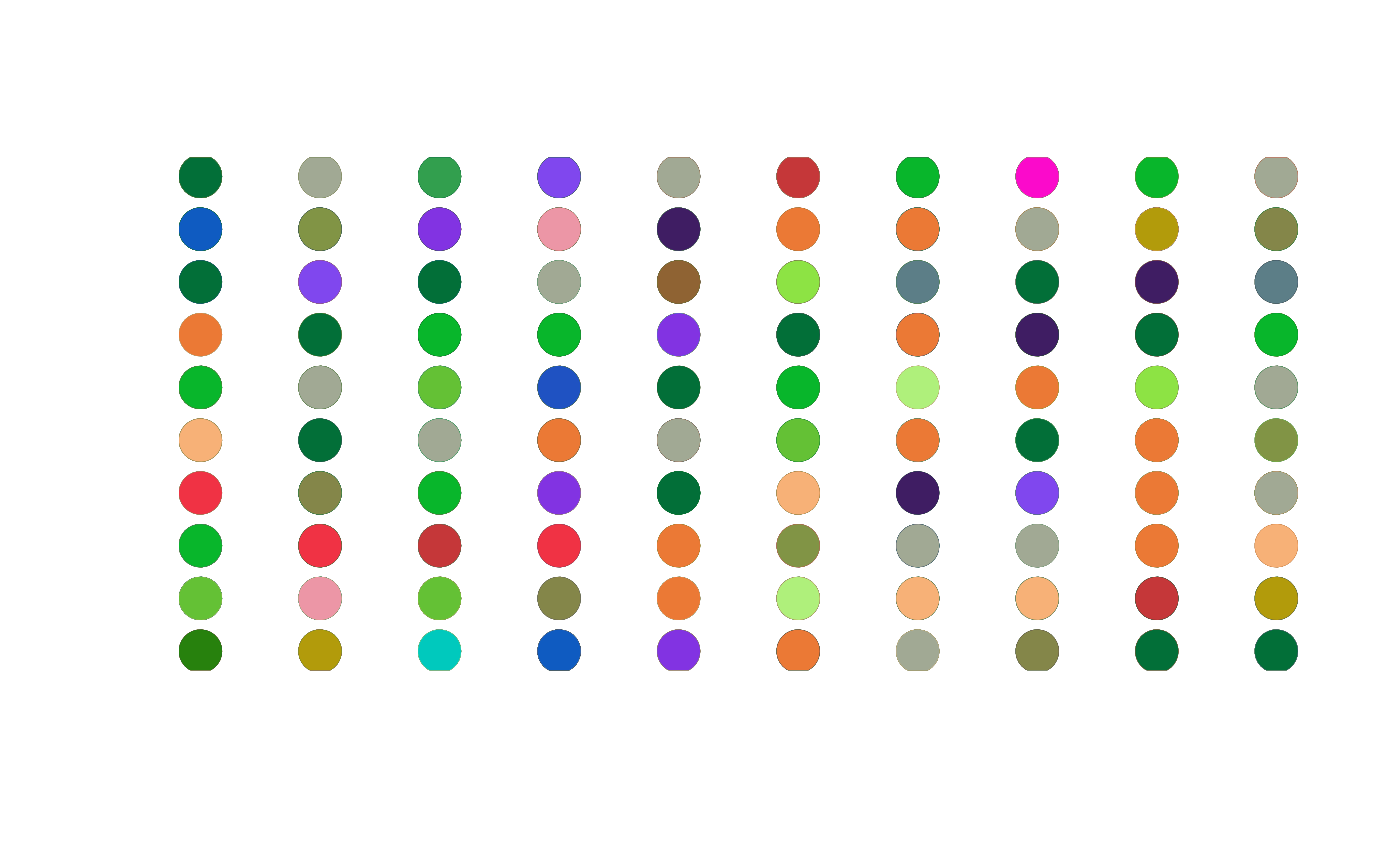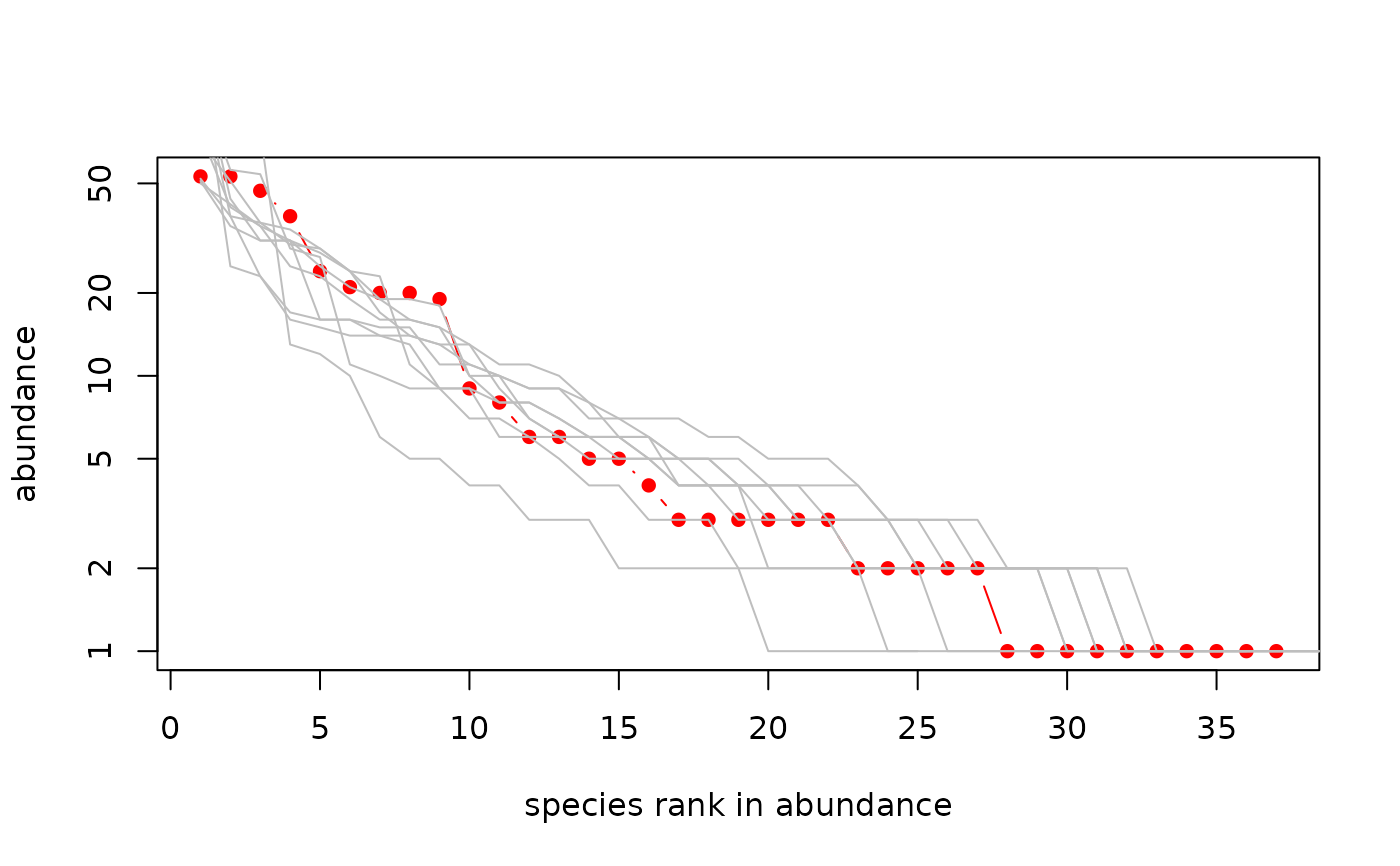Unified neutral theory of biodiversity
untb.package.RdNumerical simulations, and visualizations, of the unified neutral theory of biodiversity
Details
Package untb uses two classes of object to represent an
ecosystem: class count and class census. In essence, a
count object is a table of species abundances and a census
object is a list of individuals. See ?census and ?count
for more details. Although objects of either class can be coerced to
the other, class count is the preferred form: it is a more
compact representation, especially for large ecosystems.
The package simulates neutral ecological drift using function
untb(). Function display.untb() displays a semi-animated
graphic of an ecosystem undergoing neutral drift.

